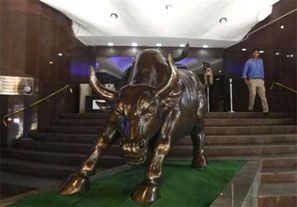One of the axioms of investment is that, in the long run, capital gains will accrue to businesses that can generate high growth in revenues and profits. In the short run, stock prices move irrationally and can be non-correlated with growth. Investors are advised to seek out the temporary pricing imperfections and use them as opportunities to invest.
 However, another market axiom tells us that the market can stay irrational longer than any investor can stay solvent. So, can we define "long run" and "short run" in terms of concrete time frames? There are no hard and fast answers. Irrationality in valuations may last for indefinite periods. It is influenced by factors such as liquidity in the system, the availability of alternative attractive investments and investor sentiment.
However, another market axiom tells us that the market can stay irrational longer than any investor can stay solvent. So, can we define "long run" and "short run" in terms of concrete time frames? There are no hard and fast answers. Irrationality in valuations may last for indefinite periods. It is influenced by factors such as liquidity in the system, the availability of alternative attractive investments and investor sentiment.
In a bear market, prices may be irrationally depressed. In that case, an investor can identify mis-pricing, invest with a safety margin and wait. Since values are low, the risk is also low.
However, in the opposite situation, when prices are irrationally high, the investor has a problem. Either he invests at high prices, hoping to sell at even higher prices (the so-called greater fool theory). Or, he waits, hoping that prices will correct and not move higher.
We've seen such irrational situations prevail for most of the past six or seven years. By 2007, the global economy was in a state of imbalance with asset prices at unnaturally high levels. Liquidity had hit absurd levels. US real estate prices were highly inflated and every financial market in the world was influenced by that bubble.
In 2008, when the US bubble burst, we saw a brief period when prices dropped to irrationally low levels and created an investment opportunity. But governments started pumping liquidity into the system, via quantitative easing in the case of US and Europe, or by pump priming by deficit-financing in the case of India and China. So prices shot up again, to unnaturally high levels.
When the second crisis hit smaller Eurozone economies such as Iceland, Ireland and Greece, governments around the world pushed up liquidity yet again. That second phase of loosening continues and Japan
has pumped up its QE programme this year.
Liquidity indicators have therefore, not been normal since at least 2006. Seven years is a long period of irrationality. We can only guess as to what will happen when this ends. There are no guarantees that rationality will prevail at that stage whenever it occurs.
Except for a brief phase in 2008-09 and another brief phase in 2010-11, stock prices have been maintained at high levels, due to the easy money available. Despite recessions in the real economy across Europe, a slow recovery in the US and a slowdown in BRICS and East Asia, equity returns have been positive through much of this period. In India itself, growth has stalled over the last 18-24 months. But equity prices have gone up.
Even if we adjust for inflation, returns have been higher than one would expect, given poor earnings growth. Another reason is that the alternative low-risk return from debt has either been very low in low-inflation zones like Japan and the US, or negative in high inflation zones like India.
We don't really know what will happen when governments decide to cut liquidity. It's reasonable to expect that equity values will correct down. It is quite likely that they will correct down dramatically because financial markets have got used to low or negative real interest rates and to high liquidity levels.
If one believes the US Fed, it will cut back on QE3 gradually through 2014, and raise interest rates only in 2015 or maybe 2016, when it projects the US economy will be back to normal. Europe is in worse shape than the US and several large European economies like Spain and Italy are in deep trouble. Japan is an enigma but it's not likely to become a growth engine. It is quite possible that the global easy money situation will continue for a while.
India is out of step. Liquidity is tightening in India and could tighten more. Indian equity prices are buoyed up purely by overseas inflows. If there is even a marginal drop in global liquidity, there could be a big drop in Indian equity prices.
A long-term investor would want that window of opportunity to open. Start buying heavily if equity prices drop by 25-35 per cent because India is out of step in another way. As and when there is growth recovery, it will be sharp.

 However, another market axiom tells us that the market can stay irrational longer than any investor can stay solvent. So, can we define "long run" and "short run" in terms of concrete time frames? There are no hard and fast answers. Irrationality in valuations may last for indefinite periods. It is influenced by factors such as liquidity in the system, the availability of alternative attractive investments and investor sentiment.
However, another market axiom tells us that the market can stay irrational longer than any investor can stay solvent. So, can we define "long run" and "short run" in terms of concrete time frames? There are no hard and fast answers. Irrationality in valuations may last for indefinite periods. It is influenced by factors such as liquidity in the system, the availability of alternative attractive investments and investor sentiment.